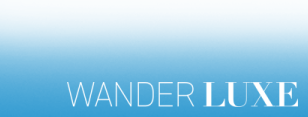
As the kinksters of San Francisco coordinate their leather lewks in anticipation of this year’s Folsom Street Fair, it’s important to remember the roots of this iconoclastic queer holiday. Folsom, like much of American history, originates from political rebellion. Just as Fourth of July is the anniversary of telling Britain to step off, and Pride is the commemoration of the Stonewall’s queers publicly pwning the NYPD, Folsom stems from confronting draconian authority.
Folsom Street and San Francisco’s fetish community was first entwined in 1966 with the opening of Febe’s, the thoroughfare’s first leather bar. By the late ’70s, Folsom had developed its own “Miracle Mile” strip, which featured over 30 gay bars, shops, and bathhouses, cementing it as the epicenter of SF’s leather community. Miracle Mile was home to such suggestively named establishments as The Ram Rod, The End Up, and Black & Blue, as well as The Eagle, which continues to reign as one of SF’s oldest gay bars. However, as Folsom’s lotus land of leather thrived, external threats began encroaching upon the area.
Throughout the 1970s, City Hall was eager to gentrify the South of Market area (colloquially known as SoMa) that was home to Miracle Mile, hoping to replace its gritty gay bars with upscale high-rise buildings. At first, Folsom’s queer community successfully fended off city officials. But by the 1980s, as the AIDS epidemic ravaged SF’s gay populace, it also strengthened City Hall’s political position. The health crisis created an opportunity for city officials to shutter Miracle Mile’s myriad bathhouses, as well as over-regulate and force out Folsom’s leather bars. So, in 1984, as a response to Miracle Mile’s impending extinction, a group of local queer community organizers and housing activists banded together to found the first Folsom Street Fair, originally called Megahood.

This inaugural Folsom served three purposes. First, it was a highly visible and interactive fundraising opportunity to aid in the legal defenses of local leather bars. Second, it was a way to connect members of SF’s leather community with health services and life-saving AIDS prevention information. And third, it raised awareness of the city’s leather community, moving it out of the shadows and into the spotlight, redefining it not just as a collection of fetishists, but as a community of activists.
Nearly 40 years later, the legacy of the Folsom Street Fair not only continues – but has evolved. The event is recognized as the largest leather event in the world, and not just for the gay community. Every September, fetishists of every gender and sexual orientation publicly drag each other around on leather dog collars and flog each other on St Andrew’s crosses. SoMa still serves as SF’s east side gayborhood, and thanks to medical advances such as PrEP, the nightmare of AIDS has been assuaged into a manageable reality, both owing a debt of gratitude to the work of queer activists, including the founders of Folsom.
This evolution accelerated during lockdown. While unable to host its iconic street fair due to health and safety concerns, Folsom organizers used the forced hiatus as an opportunity to explore other avenues for serving the community, with an emphasis on diversity, equity, and inclusion. Last July, Folsom Street opened a new community center that not only offers a varied selection of sex-positive events but also aids in fundraising for non-profit organizations. Further, Folsom Street has made changes to its board and staff, resulting in the city doubling its Grants for the Arts.

Folsom continues to embrace its rebellious roots in response to the overturning of Roe vs. Wade. “Bodily autonomy is connected to all autonomy and liberation from oppressive systems,” explains Angel Adeyoha, Director of Folsom Street. “Making a space where everybody is entitled to consensual, educated, accessible pleasure and joy is by its nature a radical act. We welcome all of you in this fight and need your support to keep this event and all of our work here and relevant.”
So, this year, when that daddy bear bends you over on Folsom Street to paddle your jockstrap-clad ass, know that you are doing more than indulging in kink. You are honoring all our jockstrap-clad forefathers who fought to keep Folsom Street, and its community, alive.
RELATED: Folsom Street Fair Official Event Guide
Don't forget to share:



















